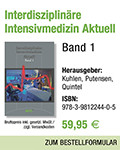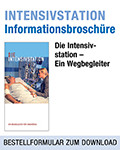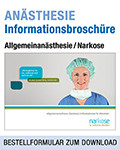

64. Jahrgang - April 2023
Intraoperative hypertensive Krise aufgrund eines nicht diagnostizierten Phäochromozytoms während eines Wirbelsäuleneingriffs – ein Fallbericht
Intraoperative hypertensive crisis due to undiagnosed phaeo- chromocytoma during spinal surgery – a case report
Phäochromozytome und Paragangliome sind Katecholamin-produzierende, neuroendokrine Tumoren, die aus chromaffinen Zellen des Nebennierenmarks oder den extraadrenalen Paraganglien entstammen.
Phäochromozytome an sich sind seltene Tumoren, die bei weniger als 0,1 % der Allgemeinbevölkerung auftreten. Atypische Erscheinungsbilder oder das komplette Fehlen klinischer Symptome können dazu führen, dass einige Phäochromozytome fälschlicherweise als andere abdominale Tumore diagnostiziert oder gar lediglich als Zufallsbefunde entdeckt werden. Aufgrund der Gefahr von lebensbedrohlichen chirurgischen und anästhesiologischen Komplikationen bei Patienten mit Phäochromozytomen, die präoperativ nicht mit Alphablockern behandelt werden, sollte dieser Tumortyp in die Differenzialdiagnose von abdominalen Tumoren unbekannter Genese einbezogen werden.
Die Autoren stellen diesen seltenen Fall von intraoperativem Bluthochdruck während einer Notfalloperation zur Stabilisierung der Wirbelsäule bei einem 37-jährigen männlichen Patienten vor. Der Eingriff musste aufgrund einer plötzlich einsetzenden Querschnittslähmung aufgrund einer pathologischen Wirbelsäulenfraktur, verursacht durch Wirbelsäulenmetastasen eines unbekannten Tumors, durchgeführt werden. Nach Ausschluss häufiger Ursachen für Bluthochdruck wie Schmerzen, unzureichender Narkosetiefe, Dislokation oder Diskonnektion der intravenösen Zugänge und sogar maligner Hyperthermie kam man zu dem Schluss, dass es sich bei dem vermuteten Lebertumor in Wirklichkeit um ein riesiges Phäochromozytom handelte und dass die Metastasen aktiv waren. Die Diagnose eines Phäochromozytoms konnte mit einem Urin-Katecholamin-Panel und einem MRT am ersten postoperativen Tag bestätigt werden.
Es besteht das Grundproblem, dass diese Art von Tumoren aufgrund der unspezifischen Klinik und der großen Anzahl „stiller“ Phäochromozytome selten in die Differenzialdiagnose einbezogen wird.
Bei Verdacht auf ein Phäochromozytom sollte das intraoperative Management den gleichen Prinzipien folgen wie auch in bestätigten Fällen. Eine schrittweise Herangehensweise und die Eliminierung häufiger Erkrankungen können uns mit einem „Zebra“ zurücklassen – einer gängigen Präsentation einer seltenen Krankheit.
Phaeochromocytomas and paragangliomas are catecholamine-producing neuroendocrine tumours arising from chromaffin cells of the adrenal medulla or extraadrenal paraganglia.
The phaeochromocytoma belongs to the rare tumours and as such occurs in less than 0.1 % of the general population. Atypical presentation or lack of clinical signs can lead to some pheochromocytomas being misdiagnosed as other abdominal tumours or being accidentally discovered. Due to the potential for life-threatening surgical and anaesthesiological complications in patients with phaeochromocytoma not treated preoperatively with alpha-blockers, this tumour type should be included in the differential diagnosis of abdominal tumours of unknown origin.
The authors present a rare case of intraoperative hypertension in a 37-year-old male patient during emergency spine stabilisation surgery. Spine stabilisation had to be done because of a sudden onset of paraplegia due to a pathological spine fracture caused by spinal metastases of an unknown tumour. After excluding more common causes of hypertension such as pain, inadequate depth of ana-
esthesia, a dislocation of the IV lines and even malignant hyperthermia, we came to conclusion that, considering the preoperative CT and MRT-scans, the presumed liver tumour was in fact a gigantic phaeochromocytoma and that the metastases are active. The diagnosis of phaeochromocytoma was confirmed with urinary catecholamine panel and MRI on the first postoperative day.
Due to unspecific clinical presentation and large amount of “silent” phaeochromocytomas, the main problem is to anticipate it in the first place. Once the phaeochromocytoma has been anticipated, intraoperative management should then follow the same principles that apply to elective cases. A step-by-step approach and eliminating more common conditions, may leave us with a “zebra” – a common presentation of an uncommon disease.











